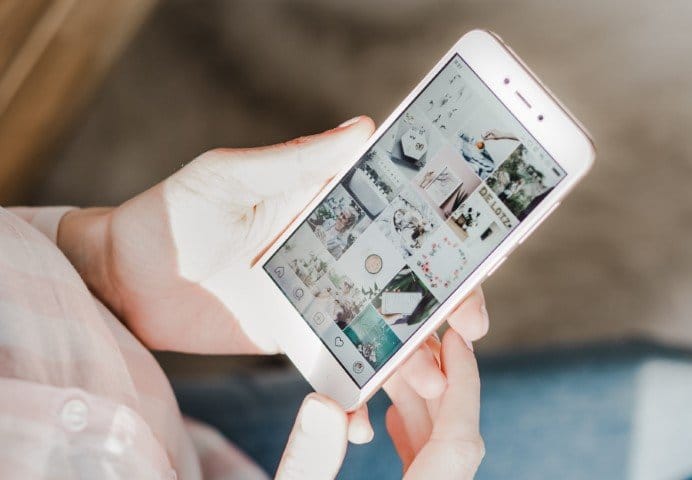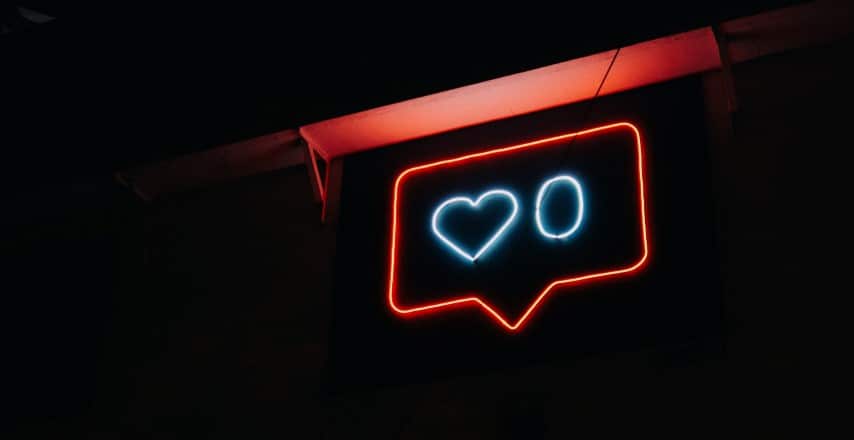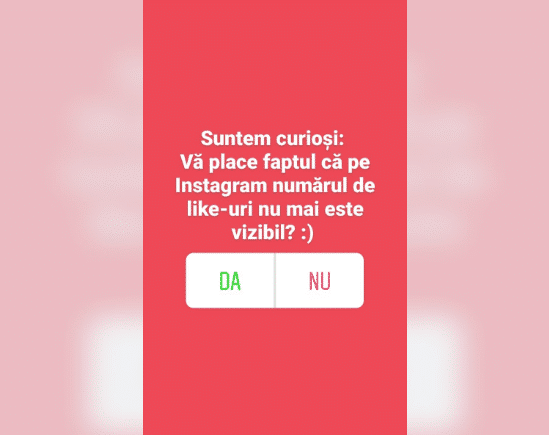No likes on Instagram: a different vibe on the social network
Some users no longer see the number of likes on Instagram – for a long time already. It is therefore time to analyze the impact of this measure for users, influencers, brands and businesses. The measure is still in the testing phase and it remains to be seen when and if it will be implemented uniformly at a globallevel.
The social network with the highest negative impact on the mental health of young people. ¹ This was the label that the beloved Instagram received just a few years ago, the application being strongly associated with high levels of anxiety, depression, bullying and FOMO (fear of missing out).
Despite its advantages, such as the fact that it encourages creativity or the expression of one’s own personality and identity, Instagram has found itself in this impasse. One of the decisions made was, as many of us already know, to hide the number of likes (hearts) received by a photo. A drastic and courageous measure, even if only with a testing status, the effects of which could not be fully anticipated.
“The hunt for Likes” vs. authentic content
Impact on the user
With all the benefits of the network, comes the pressure to be socially accepted and validated, validation translated and counted in the number of likes. Why on Instagram more than on other social networks? Instagram is especially preferred and used by young people and teenagers. With a focus on aesthetics and creative visual expression, many of us put, without realizing in a first stage, the equal sign between the content generated and the feeling of our own value as a person, we condition our self-esteem according to the number of likes on Instagram (understood or internalized often as an indicator of popularity).
In the new formula, the number of likes still exists. It is accessible to the user. By hiding this number for “followers”, however, it was intended to remove the social pressure in two directions:
- firstly, the others do not see the number of likes of the post posted by the user. This removes the concern that others see the low “performance” of its content on Instagram;
- then, the user does not see the number of likes on other profiles. This removes the natural, but often toxic, tendency to compare ourselves with others.
By limiting this hunt for likes, the focus falls unhindered on creating authentic content, free from the constraints of pressure and social validation. And many users are happy with this change and say that the effect is beneficial on their wellbeing.²
“The recent change is wonderful. It got to the point where people no longer appreciated a photo for the content itself, but because it already had 5,000 likes and then that mattered more. Moreover, people were comparing themselves to others, and this led to many mental health problems. ” – Chris Grundy, photographer in Sydney, Australia.
At the same time, some users feel that the measure is not enough or does not completely solve the problem, precisely because the number of likes is still visible for the user’s own posts. Thus, this number continues to play the role of social validation for the user.
What do the specialists say? Randi Priluck, associate professor and dean at Pace University, specializing in Social Media & Mobile Marketing, believes that:
“For teenagers, the measure is very good because they will not easily compare their level of popularity with that of others. However, they will still see the number of likes. People react to rewards, so they will continue to hunt for likes. The measure does not completely solve the problem. “
The impact on influencers and brands
“We will make decisions that impact businesses, if those decisions help people’s well-being and health.” – Adam Mosseri, CEO of Instagram.
Facebook and Instagram representatives have specified since last year that they are aware and expect such a measure to have an immediate, not necessarily beneficial, impact on businesses and influencers. The decision thus seems to be an assumed one.
What is the impact in numbers? In the testing phase, so far, in terms of influencers, there have been indeed decreases in the number of likes:
- 15% decrease in Brazil and Australia;
- 5% decrease in Japan;
- 3% decrease in the UK.
The number of likes, in the Instagram world, is a currency for these categories of users. Problematic, for example, for influencers, may be the fact that their direct partners or online marketing agencies that offer Instagram advertising no longer have quick and immediate access to the statistics of their campaigns. Collaborative relationships will be based on more trust in the statistics provided by influencers (we always have the option of a screenshot, but if there is illwill, it can still be easily edited).
At the same time, it is important for brands to understand the following: although the number of likes may be lower, that percentage is insignificant if we balance the fact that the appreciations become even more valuable in the new context, being more authentic, reflecting a real interest in the content – an interest unaltered by the “herd mentality”, such as “we like it because others have done it too”. We can thus anticipate even an increase in the conversion rate and changes in the way we interact with the posts and content generated on Instagram. Quality content can generate more comments, clicks and conversions. Of course, this is just a speculation. It remains to be seen.
“We test hiding likes because we want your followers to focus on the photos and videos you share, not the number of likes they get.” – Instagram representatives.
Moreover, in the case of businesses, attention will have to be maintainedon creating independent content that generates conversions, not just an increased amount of hearts. It will be easier to keep the focus on the overall goal of social network activity: quality interactions with potential customers leading to increased conversions.
After a long period in which we all got used to quantifying the quality and popularity of content distributed on social networks in the number of likes, Instagram challenges us to change the direction.
¹ Study conducted by the Royal Society for Public Health
² CNN Business Analysis:: „Instagram got us hooked on likes. What happens when they’re gone?”
Final question: What do you think about this measure? Does this idea of no likes on Instagram (no visible likes)make you smile? Tell us in a comment!
Remember: if the information in this article was useful to you, you can pass it on to your friends. ????And, of course, you can follow us on Instagram @ seo_365.










